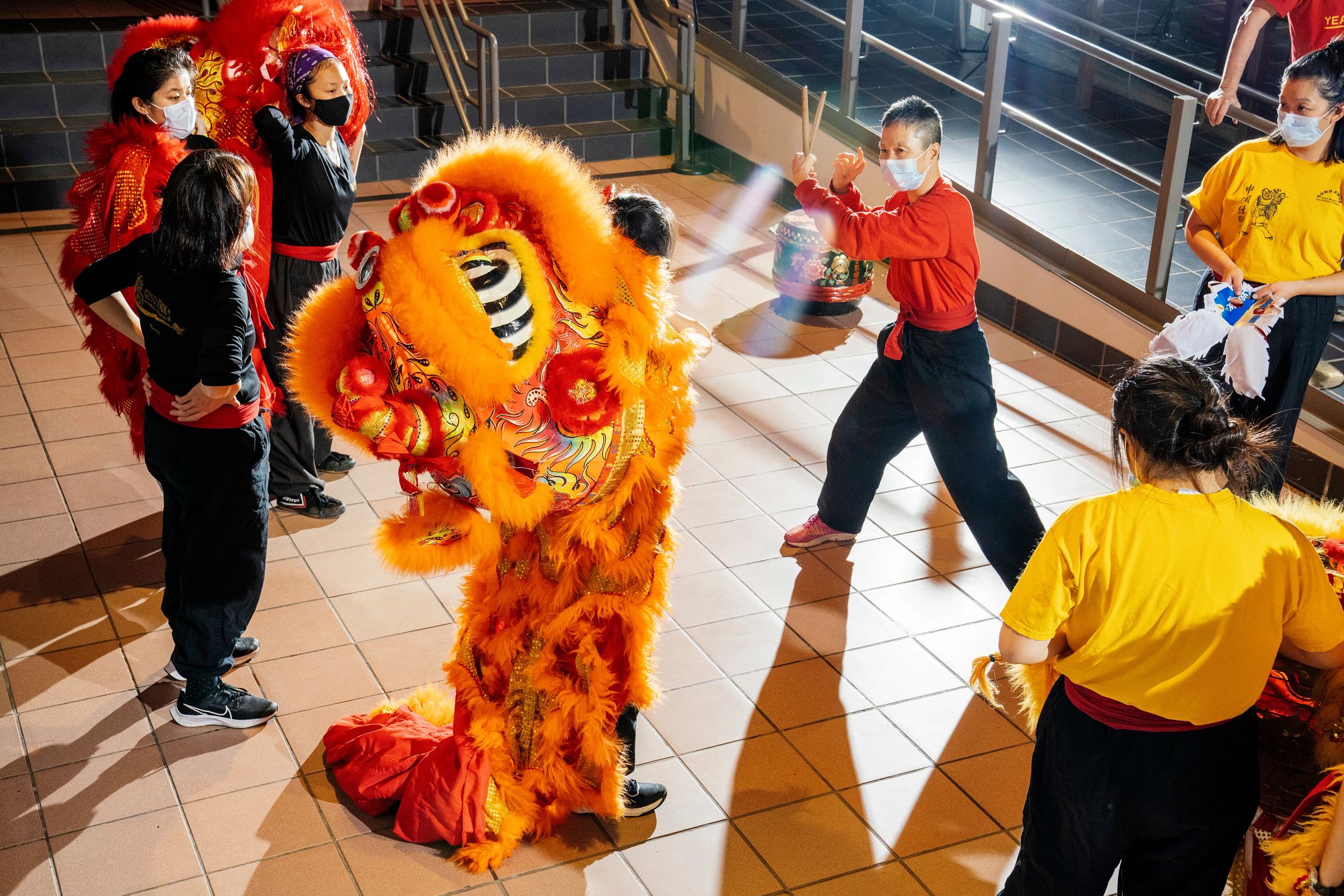Meet the women making lion and dragon dancing more inclusive
- Select a language for the TTS:
- UK English Female
- UK English Male
- US English Female
- US English Male
- Australian Female
- Australian Male
- Language selected: (auto detect) - EN

Play all audios:

To prepare their bodies for the arduous workout ahead, participants lunge and lift dumbbells. The scene looks like a typical group exercise class until members slip on ornate costumes to
embody sacred animals. On a Wednesday night in Boston’s Chinatown, it’s lion dancing time. The dancers step in rhythm to the steady beat of a drum and use their bodies to mimic the animals’
head twists and eyelash bats. Gund Kwok, an Asian American Pacific Islander (AAPI) lion and dragon dance troupe, is deep in rehearsal mode for its next performance. Cheng Imm Tan, center
right, demonstrates how to perform as the head in a two-person lion dance. M. Scott Brauer Lion dancing is an Asian traditional performance most often seen during Lunar New Year festivities.
The art form requires strength, agility and artistry. Two dancers dressed in costume move in a series of choreographed contortions and lifts to channel a lion entranced by the drumbeats.
Cheng Imm Tan, the troupe’s founder and teacher, presides over the dancers’ every step. The troupe executes all the traditional moves of lion dancing with a notable difference — the members
of Gund Kwok are all women. In a male-dominated space, women lion dancers are challenging cultural, gender and age biases. “This is about physical, mental and emotional empowerment for
women,” says Tan, 66, who choreographs, teaches and occasionally performs. “Because if you challenge yourself physically, you challenge yourself mentally and emotionally as well.” CREATING
CHANGE The origins of lion dancing are rooted in folklore. It is a cultural art form that dates back centuries in China. In one legend, a heroic lion scares away a monster and saves a
village. In subsequent years, the villagers perform the ceremonial dance that continues to be practiced today throughout the world to ward off bad luck and welcome fortune and prosperity.
Lion dancing is a popular cultural performance for special occasions such as festivals and weddings. Because of its physically demanding techniques, it is often associated with kung fu and
martial arts schools, which were predominantly male spaces. Susan Yee, a “sifu,” or master, at the Yau Kung Moon Kung Fu Institute in San Francisco, did not get the memo. She’s been
performing and teaching lion dancing for 40 years. When no one in the space looked like her, she created her own all-women’s troupe. “It was a male thing,” says Yee, 62, about the early days
of lion dancing. In 1993, Yee formed the first all-female U.S. lion dance troupe, which placed third in a national lion dance competition.